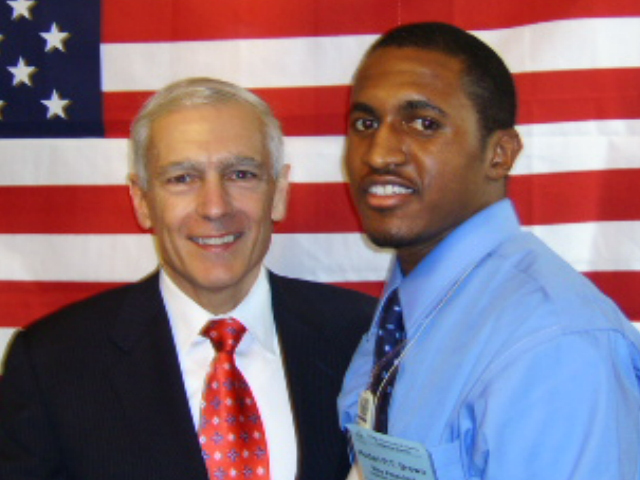However an document entitled “Taxing Sins: Are Excise Taxes Efficient?” by Katelyn Christ and Richard Williams (Download Document ) says, “Policy makers and the public have become increasingly concerned about the dramatic growth in obesity that has taken place in the United States over the last several decades. While the public claims to be concerned about the issue, obesity rates continue to increase. People seem content to wait for a magic pill that will correct the problem. While science has so far failed in its attempts to invent that pill, policy makers think they have found it. It's called excise taxes.
Still Most economists, particularly those in public finance, find it preferable to raise revenue by taxing a broad base at a low rate in order to maximize the amount of revenue while reducing the distortions to the economy. The opposite of a broad-based tax is an excise tax, a tax levied on particular goods. Historically, governments have used soft drink excise taxes, which have existed since at least 1920, primarily to generate revenue. Today, however, states and localities increasingly view the taxation of soft drinks as a social tool—a way to curb rising obesity rates.
Policies that tax sweetened soft drink for the purposes of reducing obesity and, in some cases, raising funds to advance this goal seek the same economic legitimacy as past attempts to tax “sin products” like tobacco, alcohol, and firearms. Not surprisingly, though, this tax raises efficiency concerns similar to those taxes. Taxes on sweetened soft drinks do not necessarily advance the overall public interest, may be regressive in nature, and hardly ever work as intended.
Still there are five myths that we all need to can about soda taxes. Katherine Mangu Ward wrote the article “5 Myths We Need to Can About Soda Taxes” in Sunday’s Washington Post and she begins by saying, “Like bears to honey or zombies to brains, politicians find something irresistible about soda taxes. President Obama recently told Men's Health magazine that he thinks a "sin tax" on soda is "an idea that we should be exploring." San Francisco Mayor Gavin Newsom moved to impose a fee on stores for selling sugary drinks, only to admit that his plan was probably illegal. In December, New York Gov. David Paterson proposed an 18 percent tax on full-sugar soda to help cover a budget shortfall. After a public outcry, he claimed he was just raising awareness about childhood obesity. But he was also rehashing the same old myths about how taxing soda will save us all”
So with that said, below are five myths we need to can about soda taxes:
1. Sin taxes are for our own good.
The basic idea sounds reasonable enough. Why not have the government nudge citizens along the path to righteousness by making bad choices more expensive? But even the most avid proponents of sin taxes concede that none of the nickel-and-dime proposals on the table is large enough to discourage soda drinking. And they're not really intended to. Soda taxes, like most sin taxes, aren't primarily designed to reduce consumption -- they're designed to raise revenue. Tap water is already virtually free. Adding a few cents in tax to a $1.29 soda bottle isn't going to send cost-conscious Coke-guzzlers swarming to the nearest water fountain. Forty states currently take a bite out of sales of soda or junk food -- if anyone's addicted to soda, its state legislatures. In the Men's Health interview, Obama focused on childhood obesity. But the Senate Finance Committee's interest in soda taxes at a hearing this spring wasn't about keeping American spawn slim; health-care reformers were salivating over the projected $24 billion in revenue that a 3-cent tax would generate over the next four years.
2. Soda is causing the obesity epidemic.
It's true that, on the whole, fat people drink more soda than skinny people. They also consume more calories overall and exercise less. So soda does help people pack on the pounds. But so does absolutely everything everyone eats. No news story about soda is complete without the scolding phrase "empty calories," yet soda consumption per capita has remained steady over the past two decades as obesity numbers have continued to rise. Weight gain is a function of calories in minus calories out. A food calorie is 4.2 kilojoules of energy, whether it comes from a bottle of orange juice, a latte or an ice-cold Coke. Cola calories are not uniquely "empty." They are not bleak, hollow shells of calories, staging tiny productions of "Waiting for Godot" in your love handles. A calorie is a calorie.
3. Soda taxes help everyone.
Even advocates of soda taxes admit that the costs will be borne disproportionately by the poor, who spend a larger percentage of their income on soda than other groups. Nonetheless, politicians continue the long tradition of taxing the wazoo out of a can of Coke while leaving upscale beverages and luxury foods sin-tax-free. Eight ounces of Naked's Mighty Mango juice ($3.79 a bottle at Whole Foods) contains slightly more sugar than the same serving of cola, while diet soft drinks have the same calorie count as water. But nationwide, fancy juices and venti mocha Frappuccinos remain almost completely untouched by sin surcharges, while a bodega bottle of Sprite brings down the wrath of the taxman. It's the silly, sugary equivalent of the distinction between the harsh sentencing guidelines for people caught with crack vs. the lenient sentencing for possessors of cocaine, its high-class cousin.
4. High-fructose corn syrup is extremely hazardous to your health.
It's the stuff that makes soda sticky sweet -- and the reason many justify a soda tax. Florida state Rep. Juan Zapata called it the "crack of sweeteners" and tried to ban it in schools in 2006. At the popular blog Slashfood, it's known as "the devil's additive." High-fructose corn syrup has been treated as the fall guy for America's obesity problem. But the hazards of cheap corn sweetener are the stuff of pseudo-scientific legend. New York University nutritionist Marion Nestle, a major proponent of soda taxes, has said of corn syrup: "It's basically no different from table sugar. . . . The body can't tell them apart." Even the head of the self-proclaimed "food police" has denounced high-fructose fear-mongering. Michael Jacobson of the Center for Science in the Public Interest tore into a 2004 scientific research report that kicked off anti-corn-syrup hysteria, saying, "The authors of this paper misunderstood chemistry, draw erroneous conclusions and have done a disservice to the public in generating this controversy."
5. Obesity is driving health-care costs up. A soda tax is just a user fee.
Should we consider soda taxes an advance payment for all those diabetes tests and emergency room visits down the road -- not to mention the cost of buying the inevitably necessary super-size MRI machines? A group of academics, state health commissioners and others take exactly that line in the pages of the New England Journal of Medicine this month, writing, "Escalating health care costs and the rising burden of diseases related to poor diet create an urgent need for solutions, thus justifying government's right to recoup costs." But there is a dangerous precedent at the root of this argument: that government can and should tax any behavior that hurts the budget's bottom line. That logic sends us down a strange road. It's just a slouch, sink and a slump to taxing remote controls, thus encouraging the fat and lazy to get a little exercise by standing up to change the channel.
All kinds of private decisions -- good and bad -- affect government spending. That doesn't give politicians the right to use taxes to push people around. However what would be wise for politicians is to start looking to tell our youth to make smart choices by installing nutrition education in our youth at early ages and throughout their education endeavors so they can know the importance of healthy eating. Teaching our kids how to eat a variety of foods and beverages in moderation is essential to developing skills for a lifetime. That is why I support efforts to provide nutrition education in schools. School Beverage Guidelines Childhood obesity is a serious and complex problem that requires comprehensive solutions. That is why the beverage industry is stepping up to do its part. In 2006, America’s leading beverage companies teamed with the Alliance for a Healthier Generation (a joint initiative of the William J. Clinton Foundation and the American Heart Association) to develop School Beverage Guidelines as part of a broader effort to teach children the importance of a balanced diet and exercise.
Through the guidelines, the beverage industry committed to changing the beverage mix in schools across America by removing full-calorie sodas from all schools, while capping calories and reducing portion sizes on other lower-calorie and nutritious beverage options. After just two years of a three-year implementation, the guidelines are delivering results. At the start of the current school year, nearly 80 percent of America’s schools under contract were in compliance with the School Beverage Guidelines – exceeding the agreed-upon goal of 75 percent after two years. And calories from beverages in schools have been cut by 58 percent during that same time.
The School Beverage Guidelines provide the following beverages:
Elementary School
--Bottled water
--Up to 8 ounce servings of milk and 100% juice
--Fat-free or low-fat regular and flavored milk and nutritionally equivalent (perUSDA) milk alternatives with up to 150 calories/ 8 ounces
--100% juice with no added sweeteners, up to 120 calories / 8 ounces, and with at least 10% of the recommended daily value for three or more vitamins and minerals
Middle School
--Same as elementary school, except juice and milk may be sold in 10 ounce servings
--As a practical matter, if middle school and high school students have shared access to areas on a common campus or in common buildings, then the school community has the option to adopt the high school standard
High School
--Bottled water
--No- or low-calorie beverages with up to 10 calories / 8 ounces
--Up to 12 ounce servings of milk, 100% juice and certain other drinks
--Fat-free or low-fat regular and flavored milk and nutritionally equivalent (perUSDA) milk alternatives with up to 150 calories / 8 ounces
--100% juice with no added sweeteners, up to 120 calories / 8 ounces, and with at least 10% of the recommended daily value for three or more vitamins and minerals
--Other drinks with no more than 66 calories / 8 ounces
--At least 50% of non-milk beverages must be water and no- or low-calorie options
Time of Day
--All beverages sold on school grounds during the regular and extended school day.
--The extended school day includes before and after school activities like clubs, yearbook, band, student government, drama and childcare/latchkey programs.
--These guidelines do not apply to school-related events where parents and other adults are part of an audience or are selling beverages as boosters during intermission, as well as immediately before or after an event. Examples of these events include school plays and band concerts.
Now I am willing to support physical activity legislation and initiatives are needed more so than simply taxing Americans and youth. Balancing calories consumed with calories burned through physical activity is critical to losing weight and maintaining a healthy weight for all consumers, especially children. While nutrition education addresses the “calories in” part of the equation. we also must address the “calories out” part. That is why I support legislation and initiatives that promote physical activity for our kids.
The FIT Kids Act, The Fitness Integrated with Teaching Kids Act – or the FIT Kids Act – promotes the need to make physical education in schools a greater priority. It amends the Elementary and Secondary Education Act of 1965 (ESEA) to require annual state and local educational agency report cards to include specified information on school health and physical education programs. Other objectives include: the promotion of healthy, active lifestyles by students within ESEA grant programs that support school counseling, smaller learning communities, community learning centers and parental involvement in their childrens’ education; and revising the professional development program for teachers and principals to include training for physical and health education teachers, and training on improving students’ health habits and participation in physical activities. It also directs the Secretary of Education to contract with the National Academy of Sciences (NAS) for a study that: (1) assesses the affect health and physical education have on students’ ability to learn; and (2) makes recommendations for improving, and measuring improvements to, their health and physical education in schools.
Then there is PE4Life, a non-profit organization dedicated to inspiring active, healthy living by advancing the development of quality, daily physical education programs for all children. The organization’s approach to physical education is that it should be offered daily to all children; be available to all students, not just those that are athletically inclined; provide a wide variety of sports and fitness activities; assess students on their personal progress toward fitness and physical activity goals; regularly incorporate technology; and extend beyond the walls of the school gymnasium to form community and business partnerships.
I also support The Partnership for Play Every Day. This nationwide, action-oriented partnership is made up of a diverse group of premier organizations from the public, non-profit and private sectors. It is convened by the YMCA, the National Recreation and Park Association and the National Association for Sport and Physical Education. However with all these initiatives there needs to be responsible marketing to our youth when it comes to soda and junk food similar to what has taken place in regards to cigarettes. So here the ICBA Global Guidelines on Marketing to Children: The beverage industry has long recognized the positive role it can play in promoting healthy lifestyles for all ages. This commitment extends to responsible marketing practices, especially when it comes to children. In 2008, the International Council of Beverages Association (ICBA) adopted global guidelines on marketing to children. Through adopting the ICBA Global Guidelines on Marketing to Children, the beverage industry can further protect the role of parents, ensuring a collaborative effort to help teach children around the world how to make more informed choices.
These guidelines (http://www.ameribev.org/files/marketing_to_children.pdf), which are supported by the American Beverage Association, set a standard whereby beverage companies voluntarily agree to eliminate the advertising and marketing of a wide range of beverages, to any audience that is comprised predominantly of children under 12. This policy includes paid media outlets such as TV, radio, print, Internet, phone messaging and cinema (including product placement). These guidelines were developed within the framework of a wider food and drinks industry commitment to collaborate with the World Health Organization (WHO) and other stakeholders to help implement the 2004 WHO Global Strategy on Diet, Physical Activity and Health. They are the first, sector-specific step in a broader movement that will include a variety of initiatives and a large number of food and beverage partners.
Therefore, our youth and America need education not taxation in order to deal with obesity and to create healthier lives. Discriminatory and punitive taxes on soda and juice drinks do not teach our children to have a healthy lifestyle, and have no meaningful impact on child obesity or public health. They just further burden working families already struggling in this trying economy. Even the science shows that education, not taxation, is the key to reducing obesity and improving public health. Learn more about why increased taxes are not the solution.
Below various research regarding taxing food and soda as well as obesity in this nation that prove that education is needed more so than taxes:
Why a Soda Tax is the Wrong Tax Policy
“Taxing Sins: Are Excise Taxes Efficient?”Mercatus on Policy 2009Link: http://www.mercatus.org/PublicationDetails.aspx?id=27272
The Mercatus Center at George Mason University (GMU) applies scholarly research to problems facing policy-makers. In this paper, Richard Williams, managing director of GMU’s regulatory studies program and government accountability project, along with Katelyn Christ, examine why excise taxes fail to be efficient and effective public policy. Together, they found that any impact of a soft drink tax would be trivial because soft drink consumption is a relatively small part of the diet for overweight people. Their findings also support that it would be a regressive tax, whereby the burden would likely fall disproportionately on the poor. Importantly, the paper also states that, while consumers have little control over these funds, governments may not spend the increased revenues from such taxes on the intended social purpose.
Calories are Calories “Comparison of Weight-Loss Diets with Different Compositions of Fat, Protein, and Carbohydrates.” Sacks et al.New England Journal of Medicine; February 2009
This study funded by the National Institutes of Health reaffirms that, regardless of the source, calories are calories when it comes to losing weight.
Soft Drinks Are Not Unique Contributors to Obesity
“Lack of findings for the association between obesity risk and usual sugar-sweetened beverage consumption in adults – A primary analysis of databases of CSFII-1989-1991, CSFII-1994-1998, NHANES III, and combined NHANES 19999-2002.” Sun S and Empie M. Food and Chemical Toxicology; 2007
This study looked at the relationship between obesity risk and consumption of sugar-sweetened beverages (SSB) along with multiple lifestyle factors and found that those who frequently consumed SSB (primarily HFCS-sweetened beverages) did not have a higher obesity risk than those who consumed them less frequently.
“Sugar-sweetened beverages and body mass index in children and adolescents: a meta-analysis1-4.” Forshee et al. American Journal of Clinical Nutrition; 2008
This review article looked at 12 studies to assess the role of consumption of sugar-sweetened beverages (SSB) in weight gain among children and adolescents and found that the association between SSBs and body mass index was near zero based on the current body of scientific evidence.
“The role of beverage consumption, physical activity, sedentary behavior and demographics on body mass index of adolescents.” Forshee et al. International Journal of Food Sciences and Nutrition; 2004
This study used government data, NHANES 1988-1994, to examine the relative importance of demographics, beverage consumption, physical activity and sedentary behavior for maintaining a healthy body weight. The authors found that regular physical activity was linked to lower BMI among teens whereas sedentary behavior was linked to higher BMI. Consumption of regular carbonated soft drinks had no impact on teens’ BMI; thus, to reduce obesity rates, policies should “revitalize physical activity and physical education programs for all students/not just student athletes/and educational efforts that discourage sedentary behavior will be far more successful in combating overweight than an undue focus on beverage consumption.
“Physical Inactivity and Obesity: A Vicious Circle.” Pietiläine et al. Obesity; 2008
This study showed that physical activity in adolescence strongly and independently predicts total (and especially) abdominal obesity in young adulthood. Thus, physical activity should be seriously recommended for obesity prevention in the young.
“Comparison of overweight and obesity prevalence in school-aged youthfrom 34 countries and their relationships with physical activity and dietary patterns.” Janssen et al. Obesity Reviews; 2005
This review compared estimates of the prevalence of overweight among school-aged youth in 34 countries and examined associations between overweight and selected dietary and physical activity patterns. Within most countries, physical activity levels were lower and TV viewing times were higher in overweight compared with normal weight youth. Overweight status was not associated with the intake of fruits, vegetables, and soft drinks or time spent on the computer. In conclusion, the adolescent obesity epidemic is a global issue. Increasing physical activity participation and decreasing television viewing should be the focus of strategies aimed at preventing and treating overweight and obesity in youth.
“Associations of Various Family Characteristics and Time Use With Children’s Body Mass Index.” Forshee et al. Journal of Community Health Nursing; 2009
This study looked at various family characteristics and time use on the BMI of boys and girls aged 5-18 and found that the strongest predictor of overweight was the BMI of the head of the household. The findings suggest that a family-oriented approach to prevent and treat childhood and adolescent overweight is required.
So if we are to have a healthy economy in this nation than our nation’s politicians need to understand that American families and small businesses are struggling to survive in the current economy which is why certain food prices such as milk are at its lowest prices in years. So the proposed national tax on soda and juice drinks will have a negative impact on American families struggling in this economy. This is a regressive tax that would unnecessarily burden hard-working Americans. And it would do irreparable harm to an industry whose economic reach extends to literally every community in America, directly providing 220,000 good-paying jobs with health benefits and a direct economic impact of $136.4 billion.
Now for those who think I am just saying this because I don’t want to pay higher taxes for soda than I should let everyone know that I don’t drink soda unless it is Tahitian Treat. If I do drink a soda product than I am really thirsty and that’s all that I see to drink but for the last 10 years, I have not drunk soda outside of Tahitian Treat on a regular basis. Nonetheless even when I drink my Tahitian Treat I drink at least 3 bottles of water as well. Therefore as I watched the show the Doctors on Tuesday on ABC, I saw the 4 doctors discuss higher taxes on fattening foods and soda and they even advocate for taxing soda and foods. However what the female doctor said is that most of the healthier foods in stores cost more and the fatter foods are cheaper for most consumers to buy.
The reality is that taxing foods and soda will not create healthier living. Our youth need more education about how to eat healthier and our nation’s politicians need to look at ways to create cheaper healthier foods for us as Americans to buy so that our youth can eat healthier. Most of the fruits and vegetables that we as Americans buy are not always fresh and if we buy can or frozen goods, they are not always good either. Therefore our youth today do need to eat healthier but taxing unhealthy foods will not decrease consumption just look at how cigarettes and alcohol have been taxed to death but their consumption is constantly growing with each generation almost. So taxing sins does not decrease consumption but whether finding a way to make healthier foods cheaper for Americans would be a great way to encourage healthier living because if healthier foods are cheaper than fatty foods than I am willing to bet that our youth will buy it more so than the fatty foods. This is something I can support rather than increased national taxation.
SAVE OUR YOUTH!


























No comments:
Post a Comment